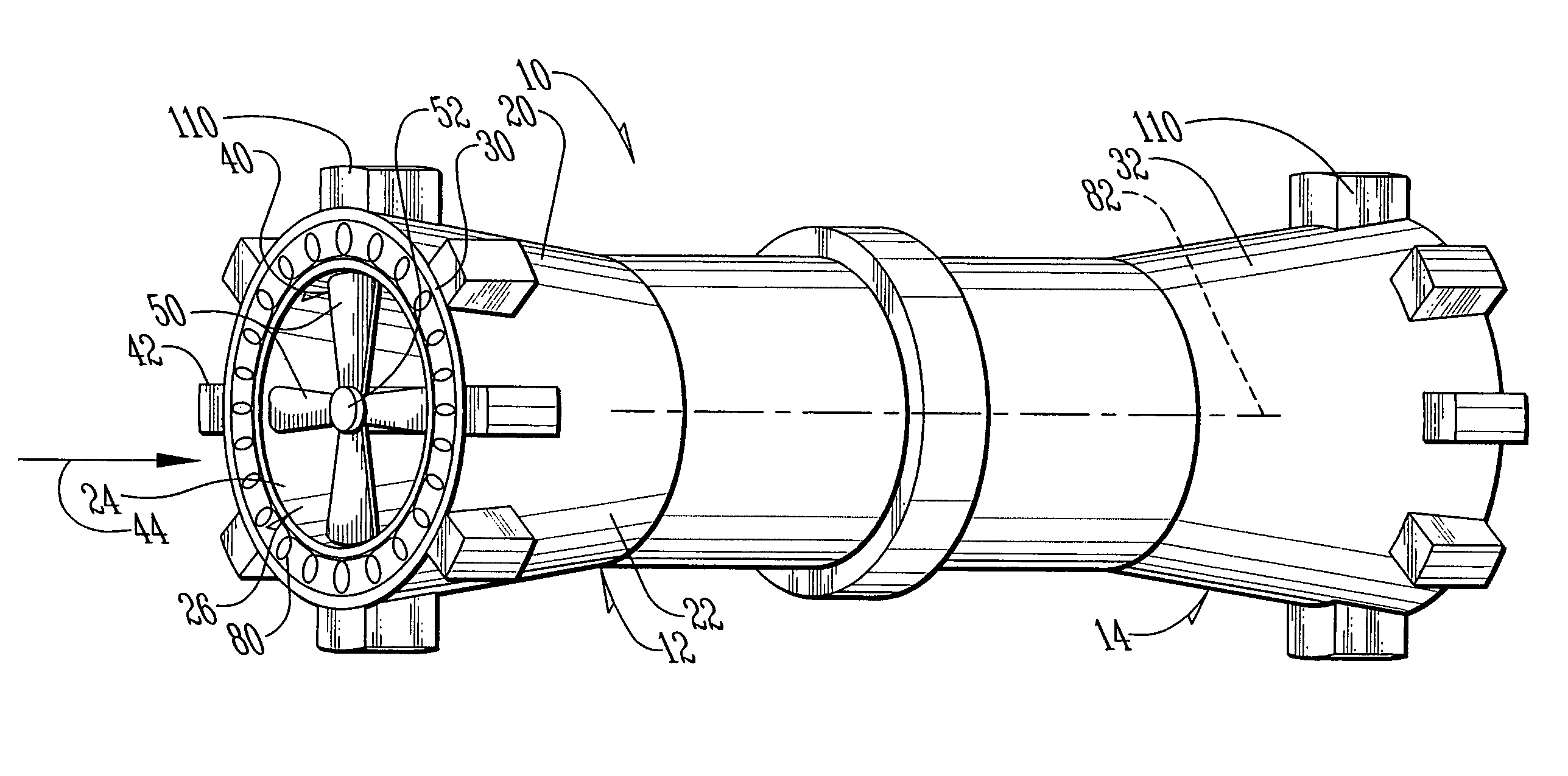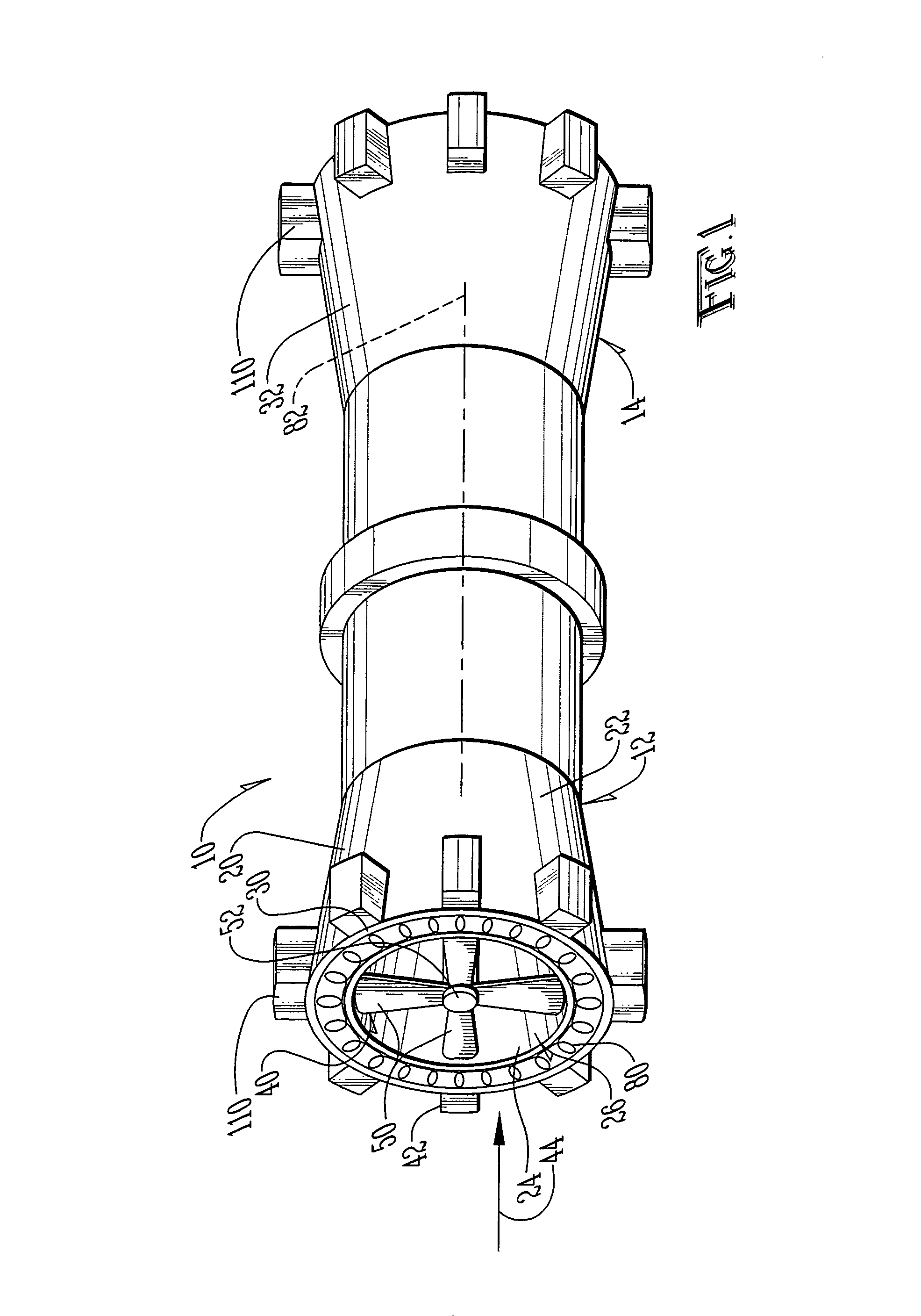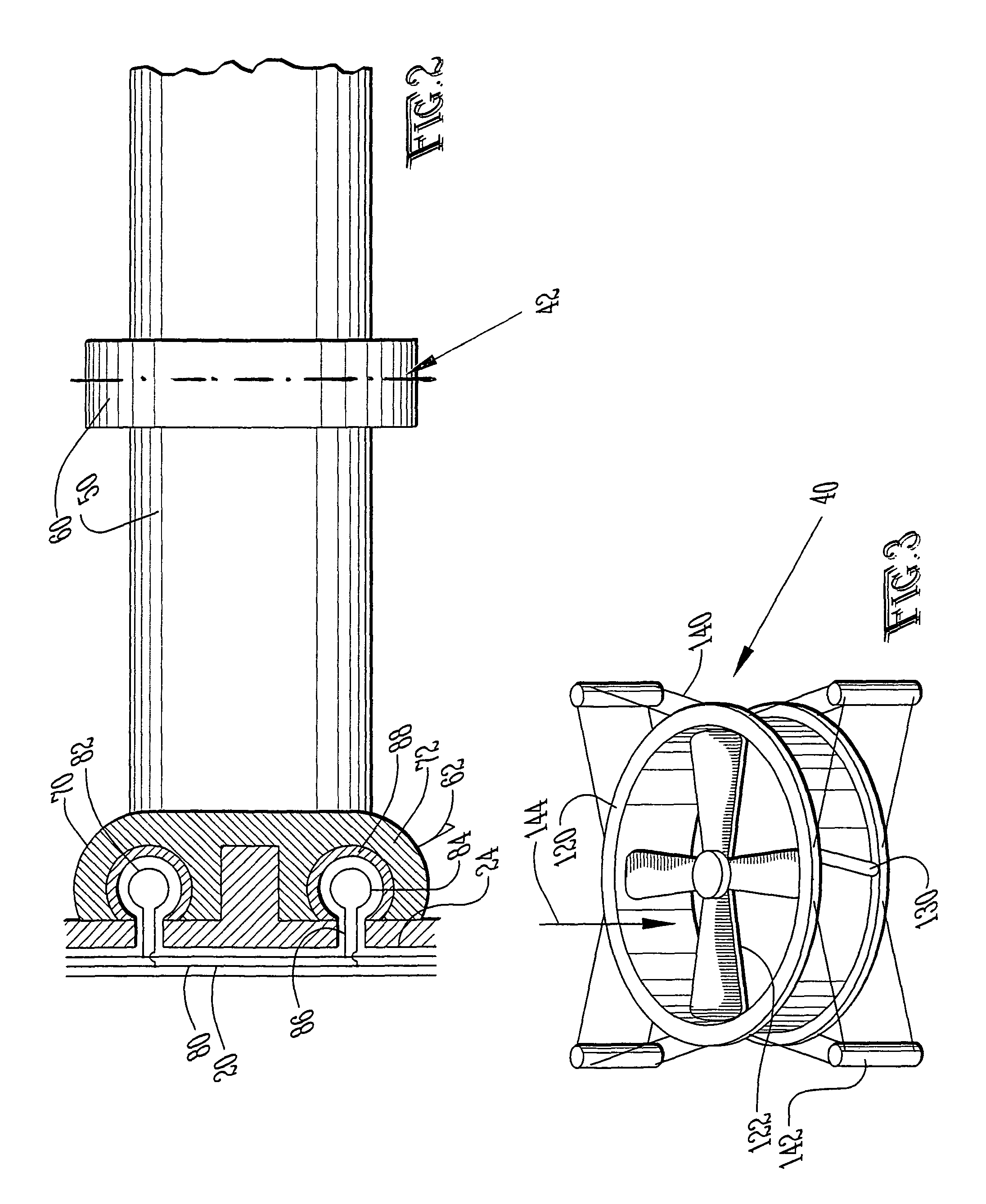Modular wind turbine system
a wind turbine and module technology, applied in the direction of machines/engines, electric generator control, greenhouse gas reduction, etc., can solve the problems of mechanical stress induced on the blading and support structure, the inability to fabricate a cost-effective method, and the inability to balance the blading on the support structure. , to achieve the effect of improving the power output, improving the stability of the blade, and improving the overall stability of the blad
- Summary
- Abstract
- Description
- Claims
- Application Information
AI Technical Summary
Benefits of technology
Problems solved by technology
Method used
Image
Examples
Embodiment Construction
[0025]Referring to the figures, it can be understood that the present invention is embodied in a windmill 10 which can be used in conjunction with various powered systems, including, but not limited to, static structures, such as houses or the like, vehicles, such as automobiles or the like and other such systems. System 10 is modular so it can be sized according to the requirements of the system being powered. Two modules 12 and 14 are shown in FIG. 1, but this should be considered as being an example only and more modules can be used as required without departing from the scope of this disclosure. Windmill 10 includes an outer casing 20 which can be sized and shaped in accordance with the requirements of the system and in accordance with the requirements of the airflow through the system. The shape shown in FIG. 1 is a converging / diverging shape, but other shapes can be used as well.
[0026]Outer casing 20 includes an outer surface 22 and an inner surface 24 which defines a bore 26 ...
PUM
 Login to View More
Login to View More Abstract
Description
Claims
Application Information
 Login to View More
Login to View More - R&D
- Intellectual Property
- Life Sciences
- Materials
- Tech Scout
- Unparalleled Data Quality
- Higher Quality Content
- 60% Fewer Hallucinations
Browse by: Latest US Patents, China's latest patents, Technical Efficacy Thesaurus, Application Domain, Technology Topic, Popular Technical Reports.
© 2025 PatSnap. All rights reserved.Legal|Privacy policy|Modern Slavery Act Transparency Statement|Sitemap|About US| Contact US: help@patsnap.com



